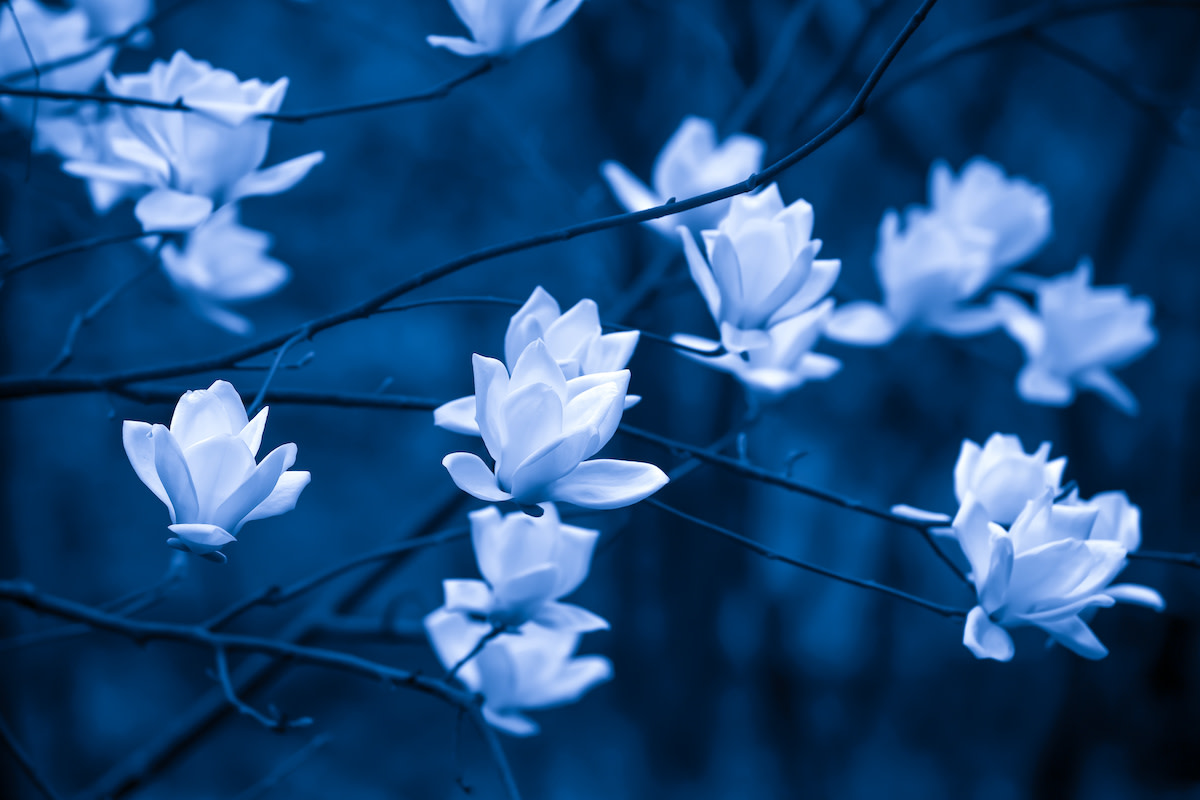Moon Garden: 17 Types of Plants to Grow in a Moonlight Garden
Written by MasterClass
Last updated: Jul 23, 2021 • 3 min read
The more white or silvery flowers or foliage you can incorporate into your moon garden, the more plant material there will be to reflect the moonlight, contributing to the garden’s ethereal beauty.
Learn From the Best
What Is a Moon Garden?
A moon garden consists of white and silvery flowers and plants that stand out as the moonlight illuminates them. Moon gardens, or moonlight gardens, can take up the entirety of your yard space or just a section—either way, they can lend a magical quality to your landscaping at night.
4 Steps to Planting a Moon Garden
Creating a moon garden requires basic garden design know-how. Here are four steps to making your own:
- 1. Plant plenty of white flowers. The lighter your flowers, the brighter they will appear by the light of the moon. You can plant an assortment of light-colored, variegated plants, such as begonias and lilacs, or stick with a uniform hydrangea or rose garden. The only hard and fast rule is that you plant predominantly or entirely white garden flowers. This can even result in the illusion of having snow in summer, especially at night.
- 2. Complement with silver foliage. Adding low-growing, silvery foliage to your moon garden of white flowers will lend the appearance of moonlit snowdrops. It can also give your flowers’ stems and roots plenty of ground cover to protect them from the light of the full sun during the day.
- 3. Supplement with additional landscaping. Add light-colored landscaping materials or hardscaping features that reflect the moonlight and any other lights after the sun sets. Consider gravel, light gray stone, or even gazing balls—reflective spheres that’ll echo the moon’s beams on your flowers. Dim mood lighting can also help accentuate the features of your garden beds.
- 4. Time things right. Before planting, plan for weather, shade, and sun. Your local climate should have the ability to support a moon garden year-round, from the balmy temperatures of late spring and full sun of late summer through the lasting chill of late winter.
17 Types of Plants for a Moon Garden
Moon garden plants should be light-colored so that they reflect the moonlight. Consider these plants with flowers or foliage in shades of white, off-white, cream, silver, or gray:
- 1. Angel’s trumpets: These shrubs—also known as brugmansia trees—produce downward-hanging, bugle-shaped flowers.
- 2. Artemisia: These spindly plants look almost like artificial Christmas trees, with leaves that appear frosted, making for a snow-capped look.
- 3. Caladium: White caladium leaves have green veins and can look striking day or night.
- 4. Candytufts: Late-blooming, ruffled, and showy flowers that like to hug the ground.
- 5. Dahlias: These flowers appear like large pom-poms and come in many different colors, including white. Dahlias also make wonderful cut flowers.
- 6. Euphorbia: Euphorbia plants come in a wide degree of styles, but choosing one with frosty leaves and flowers can go a long way in creating a unique moonlit landscape.
- 7. Evening primrose: This night-scented flower invites evening pollinators like moths and beetles. Their wide, flaring leaves and yellow centers stand out.
- 8. Flowering tobacco: Tobacco plants, also known by the Latin name Nicotiana alata, have white flowers and a sweet scent.
- 9. Four o’clock flowers: Named for the fact that they open around late afternoon, these flowers come in all sorts of colorful varieties, including white.
- 10. Hosta: Hosta plants come in a variety of colors, but you should pick up the white type for your moon garden. Their bold, wide leaves can also provide plenty of ground cover.
- 11. Lamb’s ear: Shaped like the floppy ears of sheep, lamb’s ear have wooly, felt-like coverings.
- 12. Mock orange: This bush isn’t orange, nor does it produce oranges, but its flowers do look like brilliant white orange blossoms.
- 13. Moonflowers: Also known as Ipomoea alba, these flowers look like nocturnal sand dollars. Night bloomers, they open up to the moon’s rays only to close the next morning as the sun begins to show.
- 14. Night-blooming jasmines: Known for their intoxicating scents, these fragrant flowers release their delightful aromas as soon as the sun goes down.
- 15. Shasta daisies: Among the most recognizable flowers in the world, shasta daisies have white petals and luminescent yellow centers.
- 16. Sweet alyssums: These flowering plants produce tiny, fragrant blooms in huge numbers that can really help create the illusion of a nighttime snowfall.
- 17. Sweet autumn clematis: These little white flowers are vigorous growers and a good option if you want to take a hands-off approach to your moon garden.
Learn More
Grow your own garden with Ron Finley, the self-described "Gangster Gardener." Get the MasterClass Annual Membership and learn how to cultivate fresh herbs and vegetables, keep your house plants alive, and use compost to make your community—and the world—a better place.
